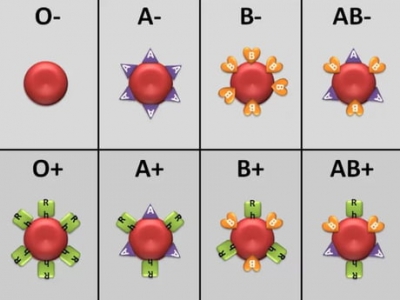
There are four major blood groups determined by the presence or absence of two antigens – A and B – on the surface of red blood cells. In addition to the A and B antigens, there is a protein called the Rh factor, which can be either present (+) or absent (–), creating the 8 most common blood types (A+, A-, B+, B-, O+, O-, AB+, AB-).
There are very specific ways in which blood types must be matched for a safe transfusion. The right blood transfusion can mean the difference between life and death.
Every 2 seconds someone in the US needs a blood transfusion.
Use the interactive graphic below to learn more about matching blood types for transfusions.
Also, Rh-negative blood is given to Rh-negative patients, and Rh-positive or Rh-negative blood may be given to Rh-positive patients. The rules for plasma are the reverse.
The universal red cell donor has Type O negative blood.
The universal plasma donor has Type AB blood.
Universal donors are those with an O negative blood type. Why? O negative blood can be used in transfusions for any blood type.
Type O is routinely in short supply and in high demand by hospitals – both because it is the most common blood type and because type O negative blood is the universal blood type needed for emergency transfusions and for immune deficient infants.
There are more than 600 other known antigens, the presence or absence of which creates “rare blood types.” Your blood type is considered rare if you lack antigens that 99% of the people are positive for. If you somehow lack an antigen that 99.99% are positive for, your blood type is extremely rare.
Picture Credit : Google




